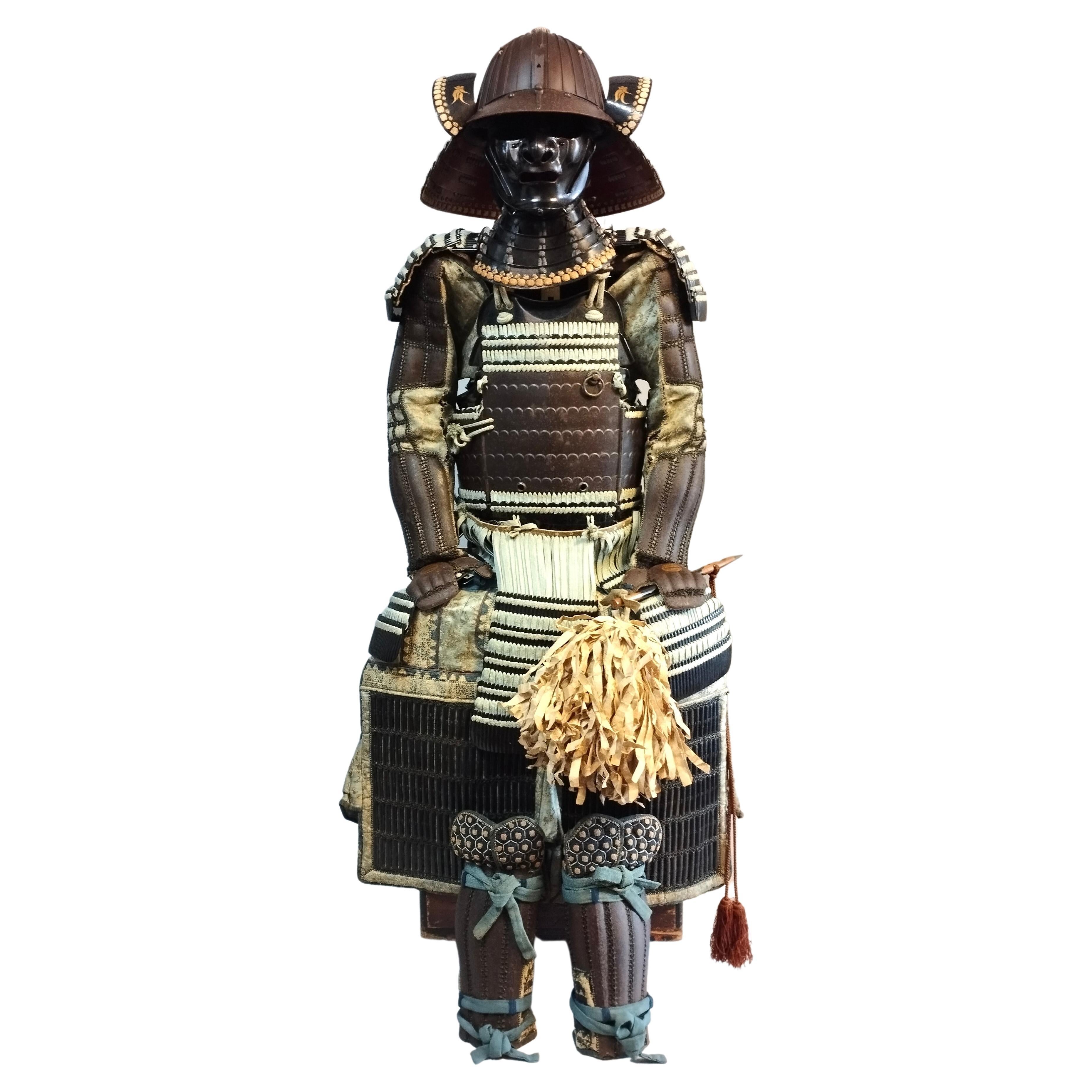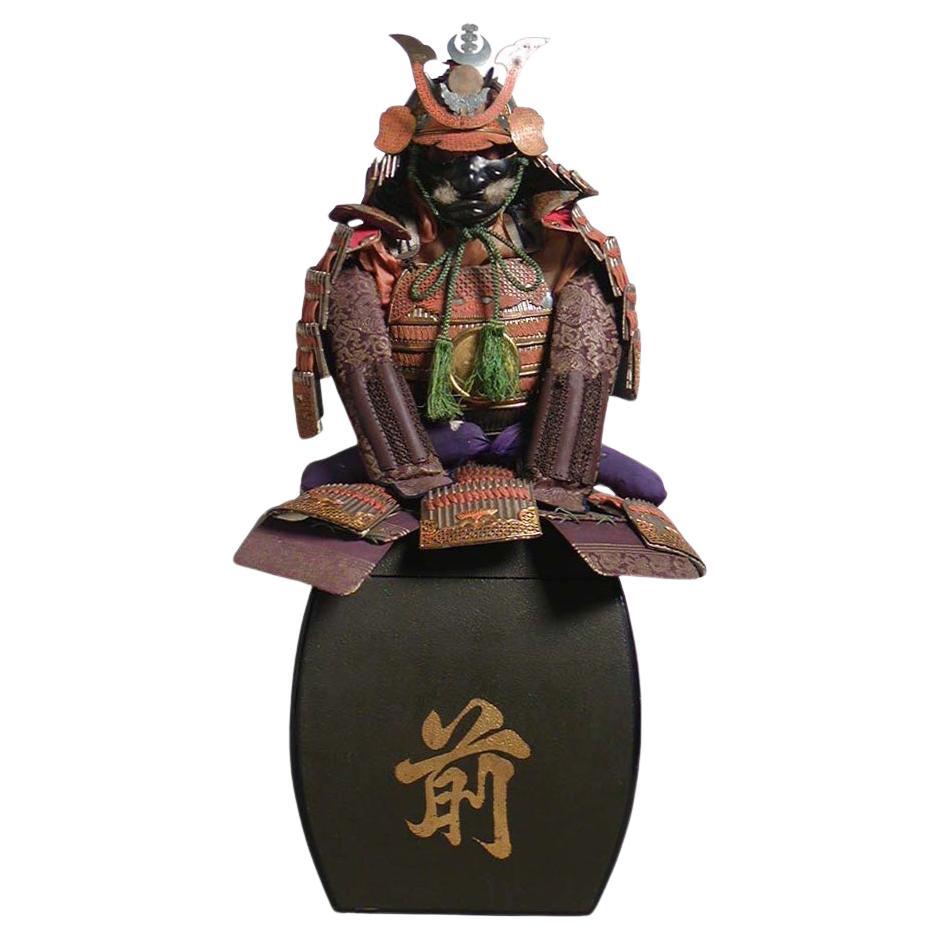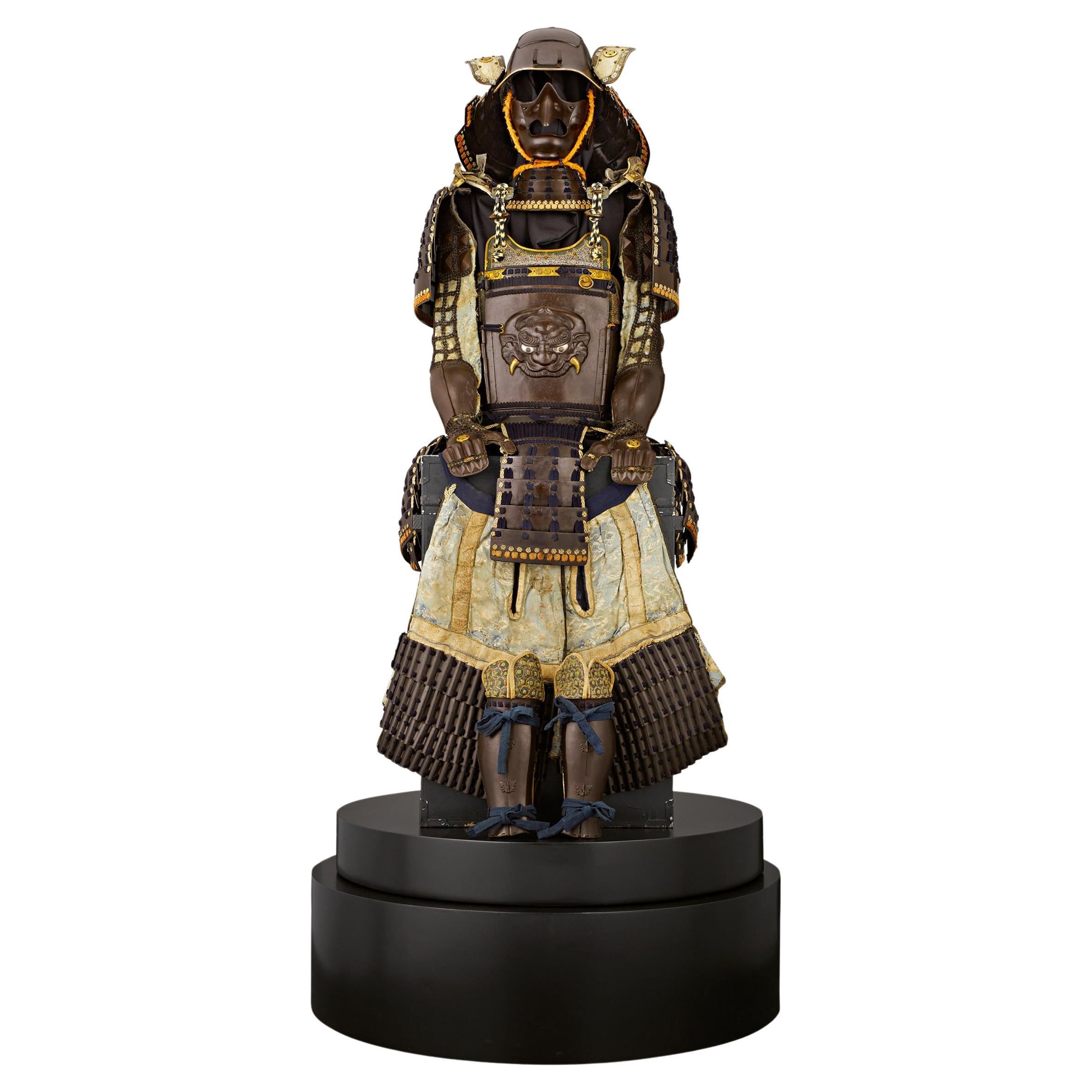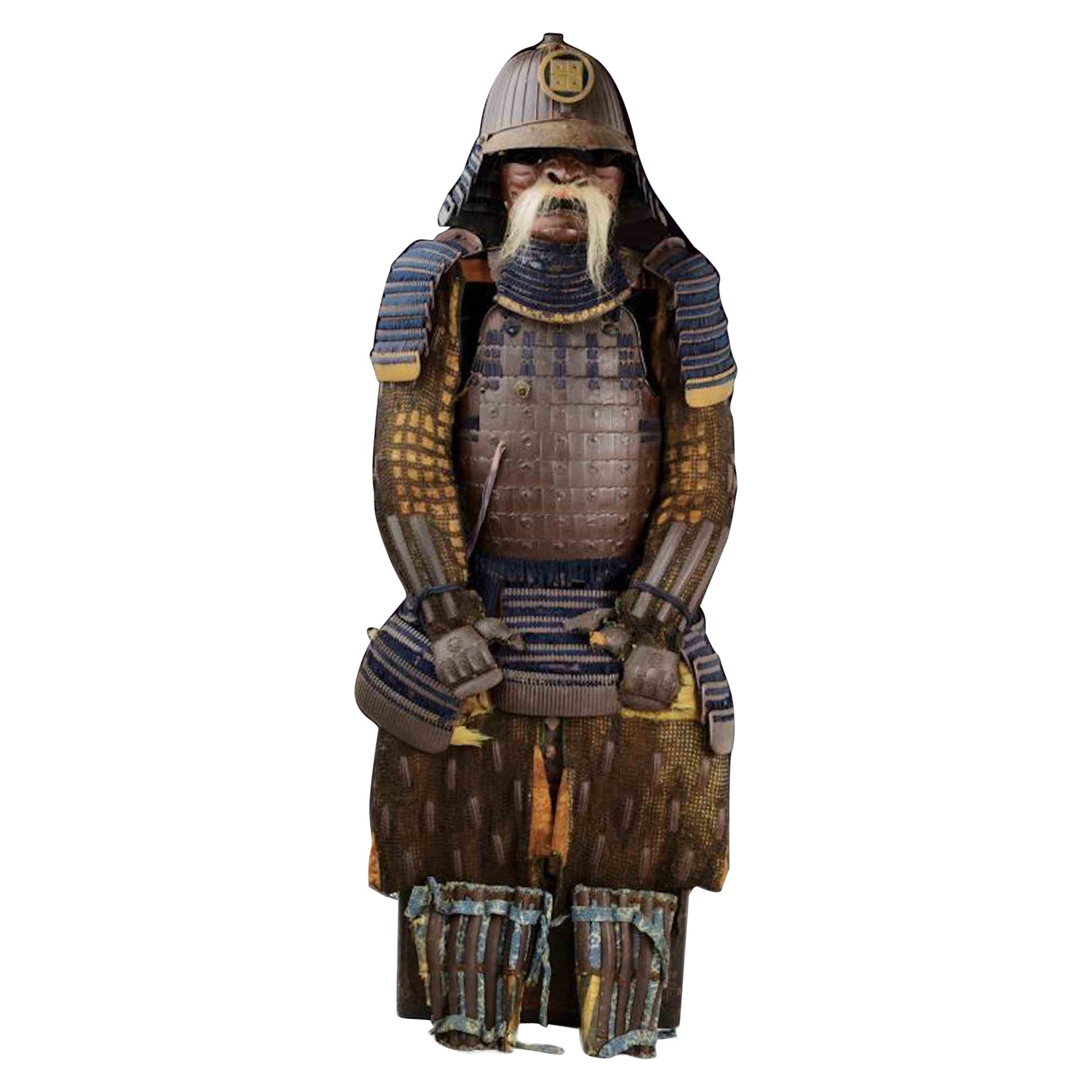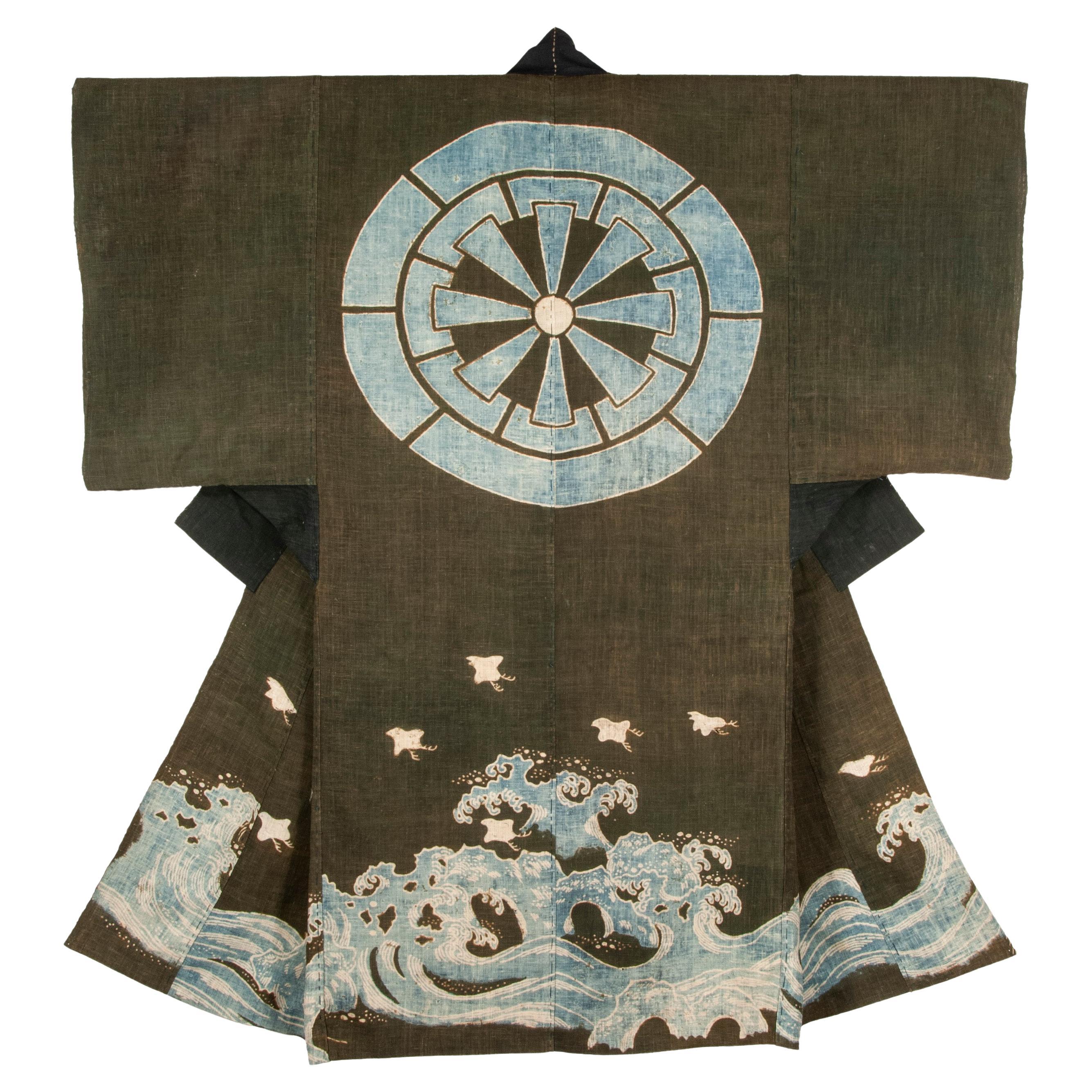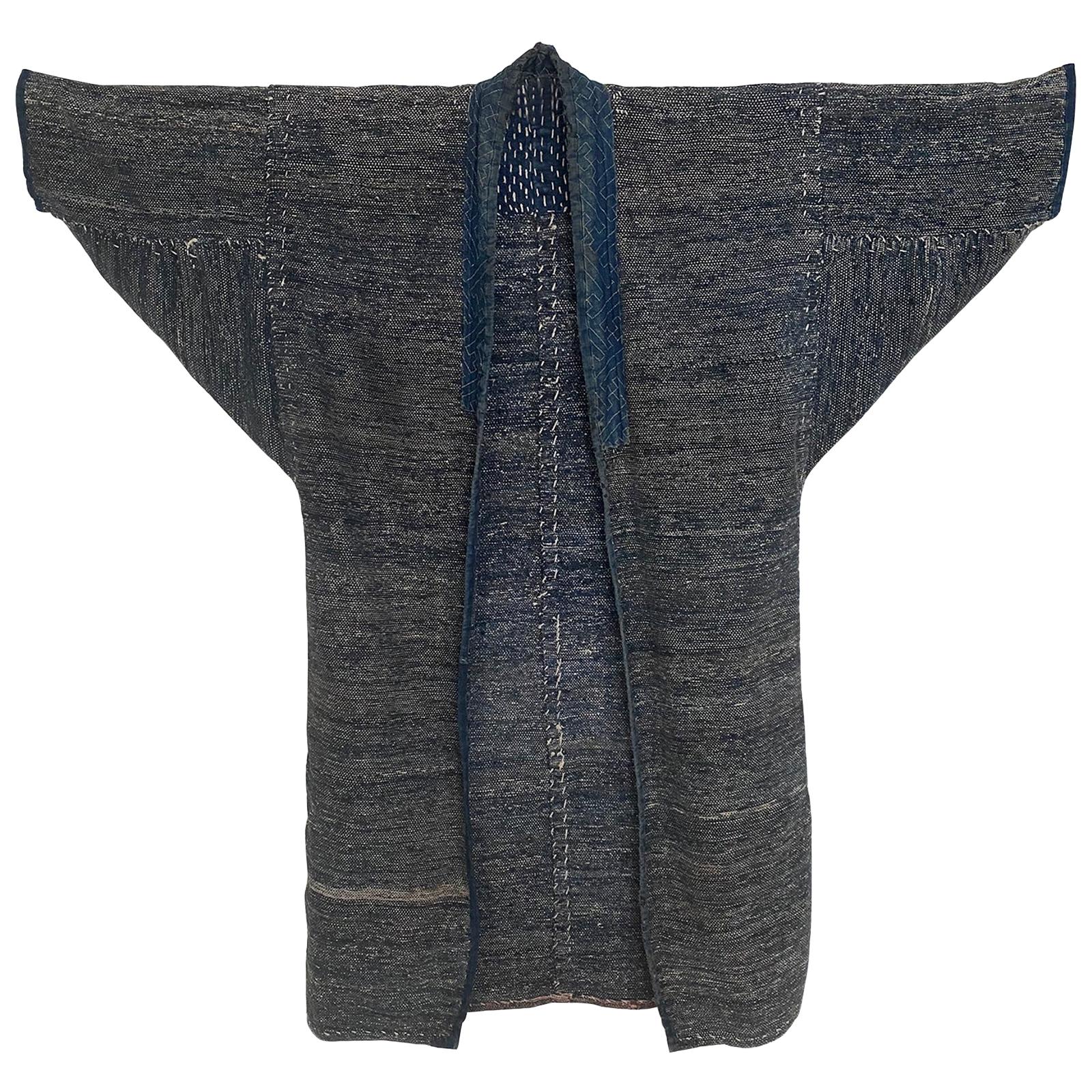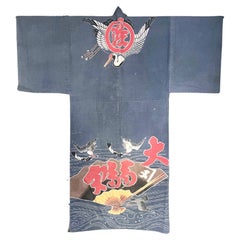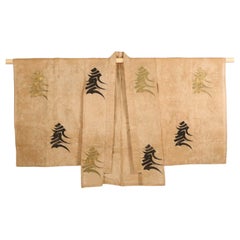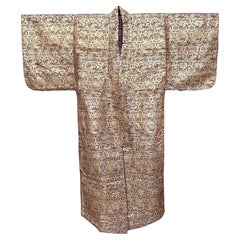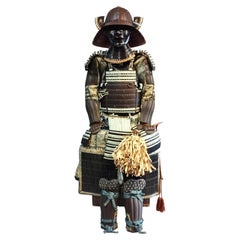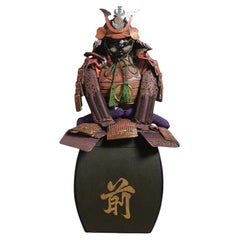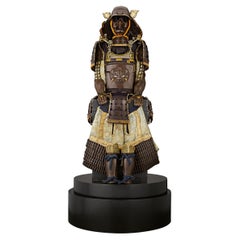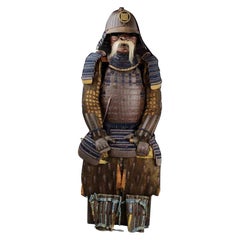Items Similar to Japanese Fireman Hood with Stencil Inscription Meiji Period
Want more images or videos?
Request additional images or videos from the seller
1 of 21
Japanese Fireman Hood with Stencil Inscription Meiji Period
$3,000
£2,276.33
€2,602.78
CA$4,190.19
A$4,658.92
CHF 2,432.63
MX$56,710.37
NOK 31,039.29
SEK 29,082.33
DKK 19,425.03
Shipping
Retrieving quote...The 1stDibs Promise:
Authenticity Guarantee,
Money-Back Guarantee,
24-Hour Cancellation
About the Item
A well-preserved Japanese fireman's hood (known as hikeshi zukin in Japanese) circa 1900s, late Meiji period. Woven with thick cotton with sashiko (cotton thread quilting) and katazome (stencil resist dye), this is a piece of vernacular textile art in an elaborate design and completely preserved form, a rare example of the survived accoutrement of the fireman's outfits. The hood features a heavily padded crown with three red stripes and stenciled inscription "the third bureau" in circle, two eye openings with flip-down cover and multiple layers of protections, each with distinctive designs and kanji inscription made by stencil resist dyes. The inner most flaps still retain its original button. The inscription indicates the that the hood belonged to the "Third Fireman Bureau" of Uchikawa, a town in Yokosuka city of the Kanagawa Prefecture, south of Yokohama.
The display stand is not included.
- Dimensions:Height: 29 in (73.66 cm)Width: 19 in (48.26 cm)Depth: 2 in (5.08 cm)
- Style:Japonisme (Of the Period)
- Materials and Techniques:Cotton,Woven
- Place of Origin:
- Period:1900-1909
- Date of Manufacture:1900s
- Condition:Wear consistent with age and use. Very well preserved in its entirety and vivid colors. One small fraying edge on the bottom flap as shown.
- Seller Location:Atlanta, GA
- Reference Number:1stDibs: LU945030925302
About the Seller
4.9
Platinum Seller
Premium sellers with a 4.7+ rating and 24-hour response times
Established in 2006
1stDibs seller since 2010
564 sales on 1stDibs
Typical response time: <1 hour
- ShippingRetrieving quote...Shipping from: Atlanta, GA
- Return Policy
Authenticity Guarantee
In the unlikely event there’s an issue with an item’s authenticity, contact us within 1 year for a full refund. DetailsMoney-Back Guarantee
If your item is not as described, is damaged in transit, or does not arrive, contact us within 7 days for a full refund. Details24-Hour Cancellation
You have a 24-hour grace period in which to reconsider your purchase, with no questions asked.Vetted Professional Sellers
Our world-class sellers must adhere to strict standards for service and quality, maintaining the integrity of our listings.Price-Match Guarantee
If you find that a seller listed the same item for a lower price elsewhere, we’ll match it.Trusted Global Delivery
Our best-in-class carrier network provides specialized shipping options worldwide, including custom delivery.More From This Seller
View AllJapanese Fisherman Festival Kimono with Tsutsugaki Design
Located in Atlanta, GA
A Japanese festival Kimono robe circa late 19th to early 20th century (end of Meiji Period) for fishing ritual. Made in a cotton fabric, the kimono was elaborately decorated by Tsuts...
Category
Early 20th Century Japanese Meiji Textiles
Materials
Cotton, Linen
Antique Japanese Noh Outer Cloak Chōken with Stencil Decoration
Located in Atlanta, GA
A large and striking Japanese outer cloak for Noh performance (known as Choken) circa 19th century (late Edo to early Meiji period). The robe was woven from a natural bast-fiber (kno...
Category
Antique 19th Century Japanese Edo Textiles
Materials
Natural Fiber
Rare Japanese Fireman's Four-Piece Assemble Meiji to Showa Period
Located in Atlanta, GA
A rare four-piece Japanese Fireman's assemble (Shobosho uniform) woven with heavy cotton and decorated with stencil resist dye circa 1890-20s Late Meiji to Showa Period. The assemble...
Category
Vintage 1920s Japanese Meiji Textiles
Materials
Cotton
Japanese Brocade Noh Costume Kimono Robe Meiji Period
Located in Atlanta, GA
A Noh costume made from magnificent silk twill brocade woven with metallic gold threads circa 1930s. The robe is identified as "Atsuita", made for male actors in the Noh play. The luxuriant fabric has a deep blue background with golden interlocking hexagon pattern that resembles tortoise shells, the symbol of longevity. The motifs showcase three auspicious symbols in repetitive patterns: roundels of coiled dragon, phoenix and peony. The kimono robe...
Category
20th Century Japanese Meiji Textiles
Materials
Brocade, Silk
Japanese Lacquered Samurai Jingasa Hat Edo Period
Located in Atlanta, GA
A bespoken Japanese historical hat known as Jinggasa (militant hat) that was worn by samurai in Edo period (1603-1868) circa 18-19th century. There were several subtypes of Jingasa a...
Category
Antique 19th Century Japanese Japonisme Lacquer
Materials
Wood, Lacquer
Japanese Wood Bugaku Mask of Korobase Edo Period
Located in Atlanta, GA
A striking Japanese carved wood mask with polychrome paint and lacquer surface. This rare mask is dated to the Edo period (first half of 19th century and possibly earlier). The mask ...
Category
Antique 19th Century Japanese Japonisme Sculptures and Carvings
Materials
Wood, Lacquer, Paint
You May Also Like
18th Century Hirate Clan Samurai Armor with Signed Kabuto Helmet
Located in Fukuoka, JP
This is a truly exceptional set of 18th century Samurai armor that is sure to impress any collector or enthusiast. The patinated iron used in its construction has aged beautifully, giving the armor a truly unique appearance that is sure to catch the eye. The brocade silk and cotton padding used to line the armor not only provide a comfortable fit for the wearer, but also add an extra layer of decorative flair.
One of the most striking features of this armor is the crests of the Hirate samurai clan that adorn it. These crests are a symbol of the clan's identity and heritage, and their presence on the armor speaks to the deep connection between samurai warriors and the clans they belonged to.
The Kabuto...
Category
Antique 18th Century Japanese Antiquities
Materials
Iron
Japanese Boy's day display suit of armor
Located in Point Richmond, CA
Antique Japanese miniature model of a suit of armor made for the Boy’s day display. Constructed of a lacquered paper cuirass, upper arm guar...
Category
Antique 1850s Japanese Edo Sculptures and Carvings
Materials
Textile, Wood, Lacquer, Paper
Edo Period Samurai Suit Of Armor
Located in New Orleans, LA
This exquisite Tetsusabiji Uchidashi Gomai Dou Gusoku (Five-Plate Russet Iron Embossed Cuirass Armor), crafted in the 18th century, exemplifies the pinnacle of Edo-period samurai arm...
Category
Antique 18th Century Asian Edo Arms, Armor and Weapons
Materials
Copper, Iron
$188,500
A Tosei Gusoku (Samurai's Armour), 17th Century
Located in Roma, IT
Belonging to the period 1603-1867, most likely between the end of 17th and the beginning of 18th Century, this beautiful armour is a 32-plate suji kabuto made of brown-lacquered iron...
Category
Antique 17th Century Japanese Figurative Sculptures
Materials
Metal, Iron
Rare Antique Japanese Oversized Sleeping Kimono (Yogi)
Located in Point Richmond, CA
Rare Antique Japanese Oversized Sleeping Kimono (Yogi)
This is the outer shell of a type of shaped sleeping kimono known as a yogi. Yogi were in more common use during the Edo and M...
Category
Antique Late 19th Century Japanese Meiji Tribal Art
Materials
Cotton, Linen
Saki-Ori Farmers Coat, Northern Japan, Meiji Period
Located in Point Richmond, CA
Saki-ori farmers coat, Northern Japan, Meiji period
A very heavy and substantial saki-ori coat, made of cotton with an indigo kasuri lapel. Several patches of hand sewn stitching ...
Category
20th Century Japanese Meiji Textiles
Materials
Cotton
More Ways To Browse
Antique Stencils
Japanese Displays Stands
Antique Furniture Stencils
Antique Pieced Quilts
Japanese Bureau
Japanned Bureau
Antique Firemans
Antique Quilt Stand
1900s Bureau
Japanese Sashiko
Japanese Fireman
Antique Japanese Quilts
Uzbek Table
Antique Chinese Embroidery
Chinese Hand Embroidered
Kaftan Saint Laurent
Kimono Gold Japanese
Yves Saint Laurent Kaftan
